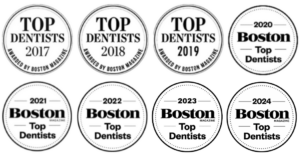8 Ways Cosmetic Dentistry Can Boost Your Confidence
Cosmetic dentistry has come a long way in recent years and has become an increasingly popular treatment option for people looking to improve their oral health and overall appearance. Cosmetic dentistry can address many issues, including crooked teeth, missing teeth, and discolored teeth, and can help improve your confidence and self-esteem.
In this article, we will explore eight ways cosmetic dentistry can boost your confidence and self-esteem, focusing particularly on lip tie and tongue tie laser release treatment.
1. A Brighter Smile
One of the most popular cosmetic dentistry treatments is teeth whitening, which can remove stains and discoloration caused by coffee, tea, tobacco, and other factors. A brighter, whiter smile can make you look younger, healthier, and more attractive, increasing confidence and self-esteem.
2. A Straighter Smile
Orthodontic treatments such as braces and clear aligners can help straighten crooked teeth and improve your bite. Straighter teeth not only look better but also function better, making it easier to chew, speak, and maintain good oral hygiene. Straightening your teeth can boost your self-confidence by giving you a more symmetrical and balanced smile.
3. Dental Implants
Missing teeth can be a significant source of embarrassment and can affect your ability to eat, speak, and smile with confidence. Dental implants are a popular cosmetic dentistry treatment that can replace missing teeth with natural-looking, permanent restorations. This can help improve your oral health, function, and aesthetics, giving you the confidence to smile, eat, and speak without worry.
4. Lip Tie and Tongue Tie Release Treatment
Lip tie and tongue tie are common conditions that can affect breastfeeding, speech development, and overall oral health. This treatment is a minimally invasive laser procedure that can help correct these issues and improve your oral health and function.
Correcting these issues can also boost your confidence and self-esteem by improving your ability to communicate effectively and comfortably.
5. Veneers
Veneers are thin, custom-made shells bonded to the front of your teeth to improve their appearance. This can help address a range of issues, including chipped, cracked, or discolored teeth, and can give you a brighter, more symmetrical smile.
Veneers can also help boost your confidence and self-esteem by improving the overall appearance of your teeth.
6. Gum Reshaping
Uneven or excessive gum tissue can be a source of embarrassment and can affect the appearance of your smile. Gum reshaping is a cosmetic dentistry treatment that can help remove excess gum tissue, reshape your gums, and improve the overall appearance of your smile.
7. Bite Correction
An improper bite can cause various issues, including headaches, jaw pain, and teeth grinding. Cosmetic dentistry can improve your bite through orthodontic treatments, restorative procedures, and bite adjustments.
An improved bite can alleviate pain and discomfort, improve your oral health and function, and boost your self-confidence.
8. Improved Speech
Dental issues such as missing teeth, misaligned teeth, and bite problems can affect your speech. Through orthodontics, restorative procedures, and speech therapy, cosmetic dentistry can improve your speech. Better speech can enhance your communication skills, boost your confidence, and improve your overall quality of life.
Conclusion
Cosmetic dentistry offers a range of benefits beyond aesthetics, including improved oral health, function, and overall well-being. By investing in cosmetic dentistry treatments such as teeth whitening and dental implants, you can improve your confidence and self-esteem and enhance your overall quality of life.
If you are considering cosmetic dentistry, it is essential to consult with a qualified and experienced dentist who can help you achieve your goals safely and effectively. Our sophisticated office caters to high-paying patients and focuses on cosmetic dentistry and lip tie and tongue tie laser release treatment. By investing in your smile, you can invest in your future.
Looking for quality cosmetic dentistry in Lexington? Turn to Lexington Smile Studio! Our experienced team of dental professionals is dedicated to helping you achieve a beautiful, healthy smile that you can be proud of. Whether you’re looking for teeth whitening, veneers, or orthodontics, we have the expertise and technology to deliver exceptional results. Contact us today to schedule a consultation.



